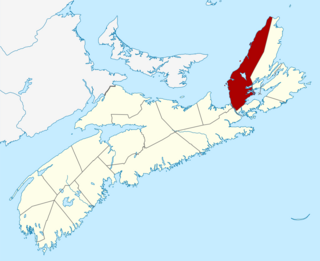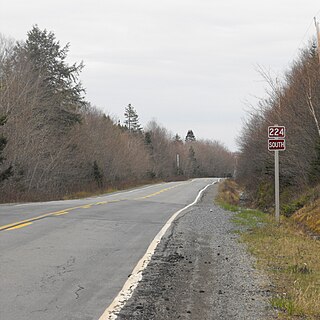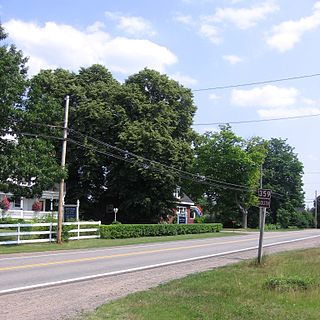| Route 219 | ||||
|---|---|---|---|---|
| Part of Nova Scotia's Ceilidh Trail | ||||
| Route information | ||||
| Maintained by Nova Scotia Department of Transportation and Infrastructure Renewal | ||||
| Length | 20.0 km [1] (12.4 mi) | |||
| Major junctions | ||||
| South end | ||||
| North end | Cabot Trail in Margaree Harbour | |||
| Location | ||||
| Counties | Inverness | |||
| Highway system | ||||
Provincial highways in Nova Scotia
| ||||
Route 219 is a collector road approximately 20.3 km long in the Canadian province of Nova Scotia.

Canada is a country in the northern part of North America. Its ten provinces and three territories extend from the Atlantic to the Pacific and northward into the Arctic Ocean, covering 9.98 million square kilometres, making it the world's second-largest country by total area. Canada's southern border with the United States, stretching some 8,891 kilometres (5,525 mi), is the world's longest bi-national land border. Its capital is Ottawa, and its three largest metropolitan areas are Toronto, Montreal, and Vancouver. As a whole, Canada is sparsely populated, the majority of its land area being dominated by forest and tundra. Consequently, its population is highly urbanized, with over 80 percent of its inhabitants concentrated in large and medium-sized cities, with 70% of citizens residing within 100 kilometres (62 mi) of the southern border. Canada's climate varies widely across its vast area, ranging from arctic weather in the north, to hot summers in the southern regions, with four distinct seasons.

Nova Scotia is one of Canada's three Maritime Provinces, and one of the four provinces that form Atlantic Canada. Its provincial capital is Halifax. Nova Scotia is the second-smallest of Canada's ten provinces, with an area of 55,284 square kilometres (21,300 sq mi), including Cape Breton and another 3,800 coastal islands. As of 2016, the population was 923,598. Nova Scotia is Canada's second-most-densely populated province, after Prince Edward Island, with 17.4 inhabitants per square kilometre (45/sq mi).
Contents
It is located in Inverness County and connects Margaree Harbour at Trunk 30 (the Cabot Trail) with Dunvegan at Trunk 19.

Inverness County is a county in the Canadian province of Nova Scotia. Its territory is almost contiguous with the Municipality of Inverness County, which only excludes the town of Port Hawkesbury and Miꞌkmaq reserves.

Margaree Harbour is a small community in the Canadian province of Nova Scotia, located in Inverness County on Cape Breton Island.

The Cabot Trail is a highway and scenic roadway in northern Victoria County and Inverness County on Cape Breton Island in Nova Scotia, Canada.
The road is designated as part of the Ceilidh Trail.
The Ceilidh Trail is a scenic roadway in the Canadian province of Nova Scotia.




